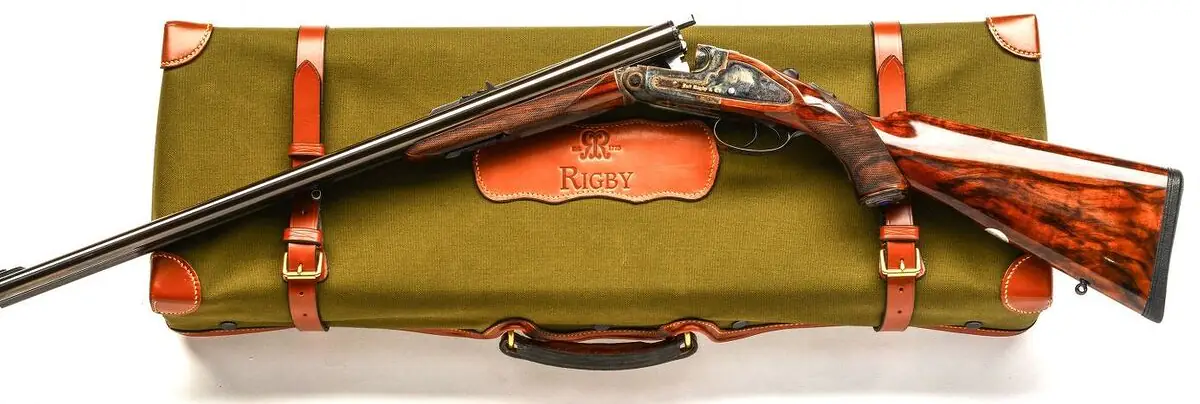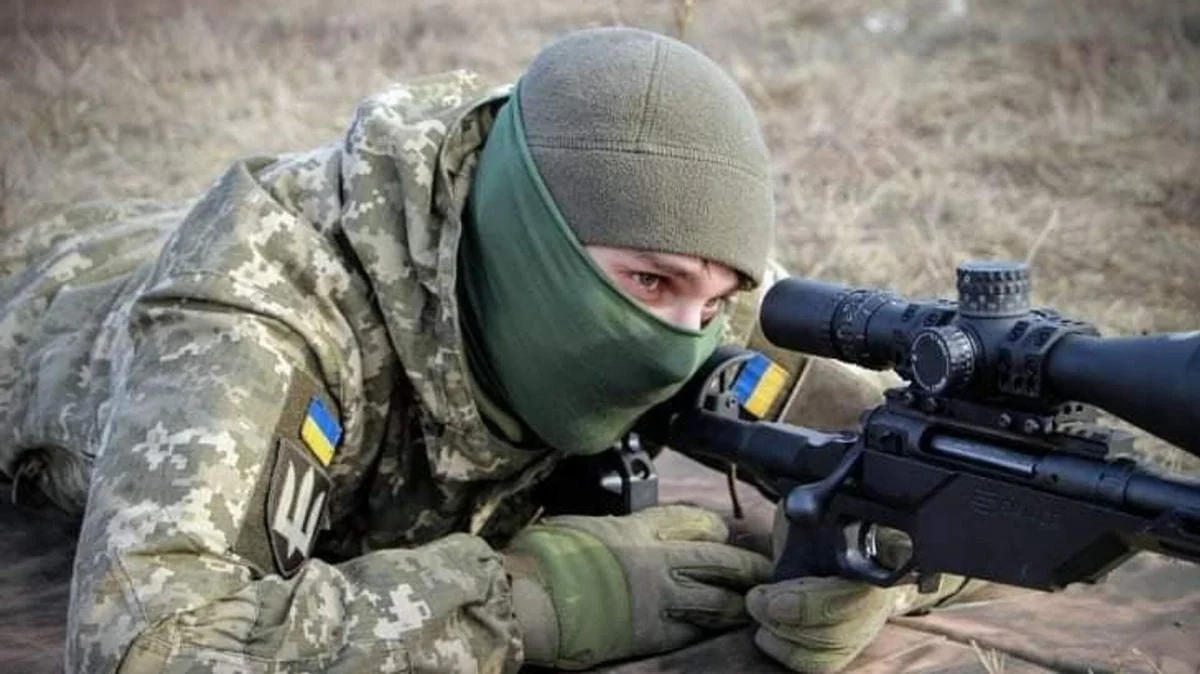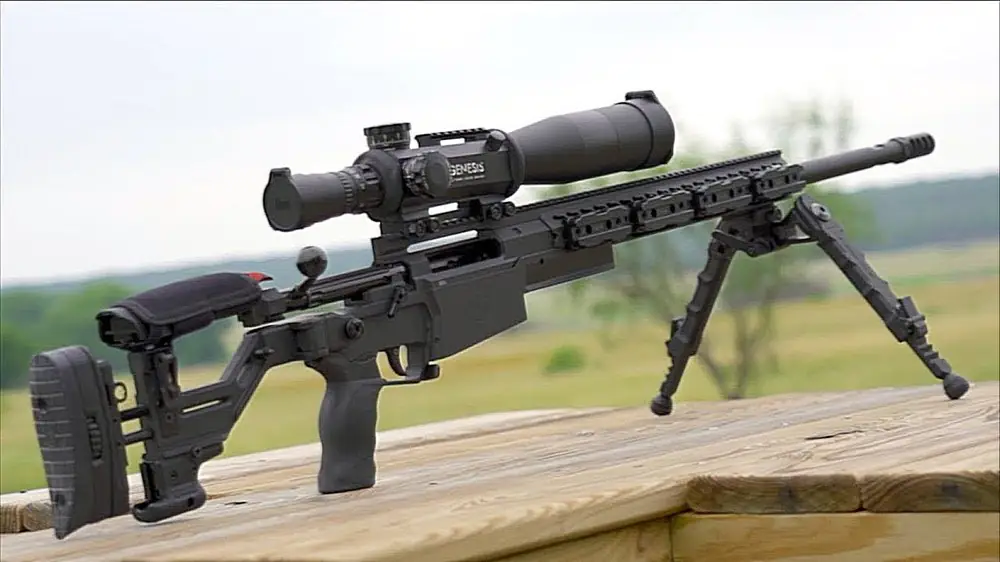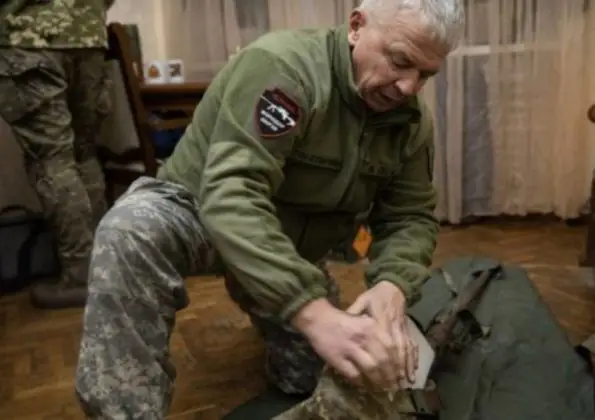© ROOT-NATION.com - Use of content is permitted with a backlink.
In the past, sniper shooting was a much simpler task than it is today. The reason lies in the enhancement of sniper rifle characteristics and auxiliary optics, reaching levels that were once unattainable. This, in turn, has led to a significant shift in the sniper’s mission and a growing understanding of the operational advantages that high-quality sniper capability offers in detecting, targeting, and neutralizing threats. Sniper shooting has evolved considerably, becoming a valuable reconnaissance tool for ground commanders.

Before discussing what modern sniper shooting entails and the tools required, it’s important to briefly cover the contemporary sniper environment and its evolution. In the past, sniper shooting was primarily associated with the operator, the rifle, the optical sight, and the corresponding ammunition. Since marksmanship was regarded as the central skill in a soldier’s training, it provided the ideal foundation for identifying those with the potential to become snipers. Once selected, this group would undergo additional specialized training, and through this selection process, the qualities of a sniper would emerge.
It was also necessary to select the right weapon for the sniper, and for a significant period, this was quite a straightforward process. During the production of standard service rifles, bolt-action weapons were commonly used. The most accurate and reliable rifles were selected and set aside for sniper use. At that point, a scope mount was added, along with an optical sight. High-quality ammunition was then introduced, and with that, your sniper capabilities were ready for action.
Read also: 5th and 6th Generation Fighters: What’s the Difference and Where’s the Limit?
The evolutionary path of sniper shooting
Sniper rifles have undergone significant changes since their inception, evolving from basic firearms into complex, high-precision tools used in modern warfare. The concept of a designated marksman with a specialized rifle emerged in the 18th century, with early examples being the British Baker rifle and the German Jaeger. These weapons prioritized accuracy over sheer firepower, marking the beginning of a shift toward precision shooting in military operations.

Technological advancements, particularly in the 19th century, played a key role in the development of sniper rifles. The introduction of rifled barrels, which greatly enhanced accuracy, was a critical milestone. During the American Civil War, rifles like the Whitworth were used, capable of hitting targets at unprecedented distances, thus elevating the role of snipers on the battlefield.
The two World Wars were pivotal periods in the evolution of sniper rifles. The introduction of optical sights significantly improved shooting accuracy, allowing snipers to engage enemies at much greater distances than with standard infantry weapons. As combat strategies evolved, sniper rifles became an essential component of military operations. The Cold War era saw further advancements with the development of dedicated sniper platforms, such as the Soviet SVD and the American M24. These systems incorporated enhanced optics and specialized ammunition, further refining the role of snipers in modern warfare.

During World War I, sniper rifles gained critical importance on the battlefield, enabling precise shooting over long distances. Specialized sniper units emerged during this period, such as the British Army’s Sniper Corps, where soldiers were trained in the art of accurate shooting and camouflage. These units developed tactics that emphasized stealth and patience, allowing snipers to undermine enemy morale and effectively disrupt operations.
Rifles like the Lee-Enfield and the German Mauser showcased enhanced accuracy and range, which were crucial in the trench warfare experience. The introduction of precision rifles allowed for more accurate targeting, significantly altering the dynamics of combat during this global conflict. The integration of sniper rifles into military strategies during World War I marked a transformative moment in warfare, elevating the sniper’s role as a key player in military operations.
During World War II, the development of sniper rifles made significant strides, enhancing their effectiveness on the battlefield and leading to the integration of specialized sniper roles into military operations. The emergence of dedicated sniper rifles, such as the American M1903 Springfield, exemplified this transition. This weapon featured improved optics and increased accuracy, enabling snipers to engage targets at greater distances.

Further development included enhancements in ammunition and sighting technologies. Manufacturers focused on creating cartridges that reduced bullet drop and drift due to wind. The collaborative efforts of military strategists and engineers during this era laid the groundwork for the modern sniper rifle. The lessons and innovations gained during World War II continue to influence the evolution of sniper rifles and their tactical applications in contemporary military strategies.
During the Cold War, sniper technologies underwent significant advancements, laying the foundation for modern practices. The establishment of specialized sniper schools became common, leading to the professionalization of sniper training and the creation of specialized courses. Optical technologies rapidly improved, resulting in advanced scopes with higher magnification and better reticle systems. Additionally, the development of ammunition produced more stable and effective rounds, enhancing the accuracy and range of snipers on the battlefield. These advancements transformed the role of the sniper, emphasizing their value in reconnaissance and counterinsurgency operations.

As the war progressed, the demand for tactics and methodologies specific to snipers increased. The emergence of specialized sniper schools contributed to this development, producing qualified snipers capable of executing high-precision tasks in diverse combat environments. The strategic importance of snipers in military operations gained greater recognition, and specialized schools refined their skills.
In tandem with optics, ammunition technology also evolved to support these advancements. The development of high-velocity rounds and specialized sniper ammunition, such as the .300 Winchester Magnum and .338 Lapua Magnum, enhanced lethality and effective range. This combination of advanced optics and ammunition has become an integral part of modern sniper rifles, significantly improving operational effectiveness in contemporary combat scenarios.
Read also: Laser Weapons: History, Development, Potential, and Prospects
Modern sniper rifles
Modern sniper rifles are distinguished by specific features that enhance their effectiveness. These weapons utilize advanced materials, such as carbon fiber and aluminum, which reduce weight while increasing strength and shooting accuracy. The integration of a modular design allows for the adaptation of the weapon to various tasks. Advances in optics have revolutionized the capabilities of snipers, including telescopic sights with high magnification and night vision devices.
Modern ammunition technologies, such as match-grade and environmentally friendly options, provide improved grouping and terminal performance. These developments ensure greater lethality and accuracy. Ergonomic features, such as adjustable stocks and grips, offer shooters comfort and adaptability in field conditions.

With the introduction of the 12.7×99 mm ammunition, operators gained a system capable of shooting at distances of 1,800 meters or more. As this weapon was procured in large quantities, significant changes occurred regarding ammunition, with standard bullet cartridges quickly complemented by more exotic options. These enhancements in ammunition were reflected in the wide range of 12.7×99 mm cartridges offered by manufacturers like Nammo for use in anti-material/sniper weaponry.
Depending on preferences, there is a vast array of hunting and competition shooting ammunition designed for long-range use that can be considered for sniper applications. Operators in military, paramilitary, and police special units often utilize these cartridges to create customized sniper solutions, as specialized ammunition is produced in limited runs. New barrels can be manufactured in the required caliber, and both can be integrated with the sniper system’s chassis.

Sniper weapons are not limited to just large-caliber rifles, as demonstrated by a British Army sniper in Musa Qala, Afghanistan, in November 2009. Using the AI L115A3 sniper rifle chambered in .338 Lapua Magnum with a Schmidt & Bender 5-25×56 optical sight, a successful shot was recorded at a distance of 2475 meters. In other notable instances, U.S. Army Specialist Nicholas Ranstad made an accurate shot at 2092 meters with a Barrett M82A1 rifle during the Afghanistan War in January 2008. Additionally, U.S. Navy Chief Petty Officer Chris Kyle shot at a target from 1920 meters away in August 2008 during the Iraq War, hitting the target with a McMillan TAC-338 rifle.
Read also: Top 8 Military Technologies of the Future to Pay Attention to Today
Increase productivity
The list of successful long-range shots highlights how much the capabilities of sniper systems have improved over the years. Another area where the flexibility of sniper systems has increased is in targeting complexes. Optical performance has improved exponentially, providing significant operational advantages. This also means that more individuals can meet the basic criteria for sniper qualification, reflecting a broader accessibility to advanced sniper training and equipment.

Sniper shooting is much more than just being the best marksman. A sniper must be exceptionally tactically savvy to take a position for hitting a target and then move to a new location after the shot. Additionally, a sniper serves as a valuable source of intelligence, as sniper optics allow for a broader view. Knowing critical information while navigating the terrain and relaying it through the chain of command is also crucial for mission success. But what makes a sniper rifle truly good?
We managed to conduct a brief interview with an active member of the Armed Forces of Ukraine, a sniper known by the alias “Mongoose,” who is also a member of the Association of Firearm Owners. Here’s what he had to say on the matter:
Read also: Weapons of Ukraine’s Victory That Changed the Course of War
The role of the sniper in modern conflicts
In modern conflicts, the role of the sniper is becoming increasingly important, adapting to the complexities of contemporary warfare. Snipers not only engage in precise shooting at long distances but also gather intelligence, amplify force, and eliminate targets. Their unique skills contribute to the overall success of missions, influencing combat strategies on the battlefield.
These specialized shooters operate within larger military units, often integrated with reconnaissance and infantry groups. Modern snipers work closely with spotters who assist in aiming and adjustments, taking environmental factors into account. This teamwork enhances effectiveness, allowing snipers to deliver swift and decisive strikes against enemy forces.

Roles have also expanded to include counter-terrorism operations, where urban environments present unique challenges. Snipers provide surveillance in high-stakes situations, ensuring the safety of allied forces and civilians. Their ability to operate stealthily and silently proves particularly advantageous in asymmetric warfare scenarios.
Furthermore, snipers in modern conflicts are equipped with advanced technologies that enhance their effectiveness. Modern optics, ballistic calculators, and real-time communication systems enable snipers to make informed decisions.
Effective team dynamics optimize mission success through careful coordination and strategic planning. Each member’s understanding of their responsibilities enhances overall capabilities, allowing for the successful execution of tasks ranging from reconnaissance to direct combat, thereby reinforcing the sniper’s role in modern military tactics.
Mongoose also says:
“The modern world demands a contemporary approach to sniper work and supporting tools. Currently, Ukrainian soldiers actively use devices such as digital rangefinders and ballistic calculators. If a sniper has multiple weapons at his disposal, for example, if he uses a 5.56 caliber rifle for one task, a 7.62 caliber rifle (for distances up to a kilometer) the next day, and then a .338 caliber rifle for two kilometers the day after, he definitely needs a ballistic calculator, along with wind calculations. It simply doesn’t make sense to keep all this data in his head. Designated marksmen, on the other hand, don’t always use these tools as they have different requirements. They typically have one weapon and know the ballistic parameters of their rifle well. It’s important to note that even a single rifle can provide different ballistic results, depending on the bullet’s weight and its initial velocity. If the barrel is shorter, for example, 50 cm, its initial velocity will be lower than that of a barrel measuring 60 cm, resulting in different ballistic performance. However, in general, snipers, myself included, get accustomed to the weight and ballistic curve of a specific cartridge and typically use that.”
Read also: Weapons of Ukrainian Victory: Long-range AASM Hammer bombs
Ukrainian world record
It’s also important to mention the Ukrainian sniper from the Security Service of Ukraine who eliminated an enemy target at tank range in 2023, etching his name into world history.

This legendary warrior is Vyacheslav Koval’skyi, a 58-year-old Ukrainian sniper of international caliber, who succeeded in hitting an enemy target at a distance of 3.8 kilometers.
3.8 kilometers is an extraordinary distance. Vyacheslav shared with The Wall Street Journal the astonishing details of the day he set a world record. He made this million-dollar shot on October 18 in the Kherson region. As is customary for snipers, he worked in tandem with a spotter, who helped him locate the target, calculate the distance with mathematical precision, and account for wind deviation. Vyacheslav fired from a Ukrainian-designed rifle known as the “Horizon’s Lord”.

As journalists discovered, Vyacheslav is not just an ordinary soldier but a professional marksman with years of experience. A former businessman, Koval’skyi has showcased his incredible skills in the Armed Forces of Ukraine since the onset of the full-scale invasion. By firing nearly 4 kilometers, the Ukrainian sniper secured the top spot in the world rankings of snipers.

It’s worth noting that this list includes another Ukrainian shot as well. The other entries in the top rankings are American, British, and Canadian snipers who have distinguished themselves in conflicts around the globe.
Read also: Weapons of Ukrainian Victory: Precision-Guided AGM-154 JSOW Glide Bomb
Iconic sniper rifles in history
The development of sniper rifles has led to the emergence of several iconic models that have shaped military history. These rifles are distinguished by their accuracy, range, and effectiveness in combat conditions. Throughout various conflicts, several notable sniper rifles have gained significant recognition.
- The Lee-Enfield 4 T, used during World War II, was renowned for its accuracy and reliability. British snipers employed this rifle with great success against enemy forces.
- The Mosin-Nagant rifle, particularly the M91/30 variant, became a symbol for Soviet snipers during World War II, showcasing its deadly effectiveness at long distances.
- After the Vietnam War, the American M40 sniper rifle emerged, known for its exceptional accuracy and versatility. Additionally, the Barrett .50 caliber rifle, with its devastating power and long-range capabilities, became synonymous with modern sniper fire at extended distances.

These rifles not only reflect the technological advancements in weaponry but also highlight the growing role of snipers in military operations, solidifying their status in military history. The evolution of sniper rifles has transformed the way conflicts are conducted, emphasizing the importance of precision and strategy on the battlefield.
Read also: Top 10 Most Important Known Military Satellites
Sniper rifles in modern warfare
Over the past century, technology has advanced at an unprecedented pace, and firearms have greatly benefited from this progress. The focus in developing sniper rifles has always been on improving three key aspects: accuracy, power, and range. Today, these weapons are more versatile, reliable, and precise than ever before.

Among the best sniper rifles today is the AI AXSR. Developed by Accuracy International, this rifle is renowned for its engineering solutions that provide unmatched accuracy and reliability. The Barrett M82, a manually operated bolt-action sniper rifle, is another top-tier weapon.

The U.S. Armed Forces are equipped with several high-quality sniper rifles, including the M24 and M40, as well as the upgraded M2010 Enhanced Sniper Rifle. These rifles are based on the Remington 700 design, which is also widely used in law enforcement.

Modern sniper rifles boast an effective shooting range that was unimaginable just a few decades ago. For instance, the McMillan Tac-50 has a maximum effective range of over 3,000 meters. Notably, during the Russian invasion of Ukraine, a number of these rifles were supplied to the Ukrainian Armed Forces by the Canadian government.

Modern sniper rifles have undergone significant changes in various components, distinguishing them from their predecessors:
- Scopes: Modern scopes offer higher magnification, clarity, and durability. They often feature functions like illuminated reticles and bullet drop compensators. Some even come equipped with smart features, such as digital displays and rangefinders.
- Action: Modern sniper rifles operate using either bolt-action or semi-automatic mechanisms. Bolt-action rifles typically offer higher accuracy, while semi-automatic models provide faster firing rates. Although speed isn’t usually a priority for snipers, it can still be quite convenient.
- Magazines: Modern sniper rifles typically utilize detachable box magazines, enabling quick reloading of the weapon. The capacity can vary, but it usually ranges from 5 to 10 rounds.
- Barrels: The barrels of modern sniper rifles are often free-floating, meaning they do not touch the stock. This design minimizes the effects of heat and barrel vibration on shooting accuracy. Additionally, barrels are usually longer to enhance bullet velocity and precision.
- Stocks: Modern stocks often feature adjustable components, such as cheek rests and butt pads, to provide greater comfort and stability. They are typically made from advanced materials to reduce weight and enhance the rifle’s durability.
Read also: What passenger trains of the future will look like
The future of sniper rifles
The direction of sniper rifle enhancement is quite clear. There is a constant trend toward incorporating technological advancements, focusing on accuracy, range, and adaptability. One of the most significant developments is the high-precision sniper rifle MK-22 (Mk 14 Enhanced Battle Rifle (EBR)), which is set to replace all bolt-action sniper rifles in the U.S. Marine Corps as well as the existing M107 and the M2010 Enhanced Sniper Rifle in the Army. This new rifle represents a shift toward multi-purpose adaptive systems that provide soldiers with greater flexibility in various combat scenarios.

From a technological standpoint, we may have reached the peak capabilities of the sniper rifle in its traditional sense. However, the future may lie in the further integration of advanced technologies into this weapon. This could include more sophisticated optics, improved ammunition, and perhaps even intelligent technologies for better target acquisition and tracking.
Regarding the downsides of modern sniper operations, Manguст says:
“There is no such thing as a universally perfect sniper rifle that meets all needs. The downsides lie not in the weapon itself but in the selection process. As for the challenges in modern sniper work, one major issue is the decrease in the effectiveness of snipers due to the widespread adoption and daily active development of aerial support, specifically the use of drone units, which has reduced the demand for traditional sniper roles. Yes, sniper work is still important and continues to develop, but certainly not at the pace it once did. The requirements of modern warfare are making their adjustments. Many of my comrades, who were snipers at the beginning of the war and did their jobs well with impressive records, are transitioning to become FPV drone operators. Gradually, the necessity and popularity of snipers are diminishing, but that is a reflection of the times, and it’s something we need to understand.
When discussing what needs improvement in the work of Ukrainian snipers today, the issue of supply arises. Many items have to be purchased out of pocket, or funds need to be raised, with significant help from volunteers. Take, for example, an American sniper—he doesn’t have to buy anything with his own money, while ours often have to cover nearly all expenses themselves. We hope that over time this will change, perhaps even after the war, when our Armed Forces will be seasoned by experience and our state will be able to provide fighters with everything they need.”
Read also: What Passenger Airplanes of the Future Will Look Like
Conclusions
Sniper rifles have come a long way from humble hunting rifles to modern high-tech incarnations. Step by step, improvement by improvement, they have become increasingly suited for long-range shooting. However, the evolution of sniper rifles would not have been possible without optical sights. These are the key elements that have made sniper shooting what we know today. While we don’t know what the future holds for sniper rifles, as they have already reached a certain peak in their development, they will undoubtedly remain a vital part of weapon history and modern warfare.

Equipped with the most advanced sniper systems, skilled marksmen serve as force multipliers on the battlefield, providing commanders with the ability to deliver precise strikes and asymmetric advantages over their adversaries. The integration of artificial intelligence, enhanced optics, and predictive analytics will further expand the capabilities of sniper systems, ensuring they remain at the forefront of high-precision warfare in the 21st century.
Read also:
- 6 Intercontinental Ballistic Missiles (ICBMs) That Could End the World
- Top 5 Most Modern Nuclear Submarines
- What is MIL-STD 810H: Standard Characteristics, Testing, and Usage



